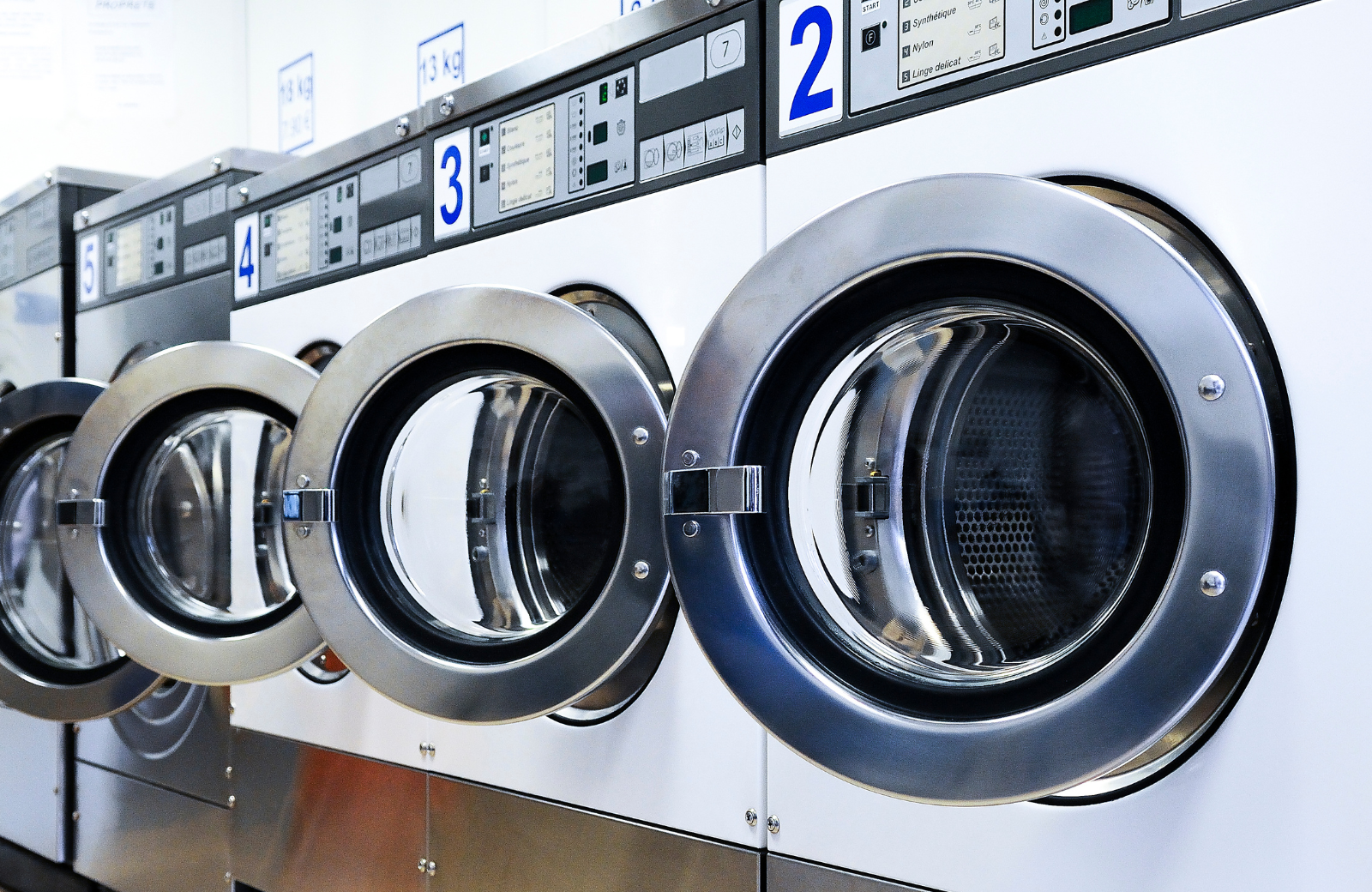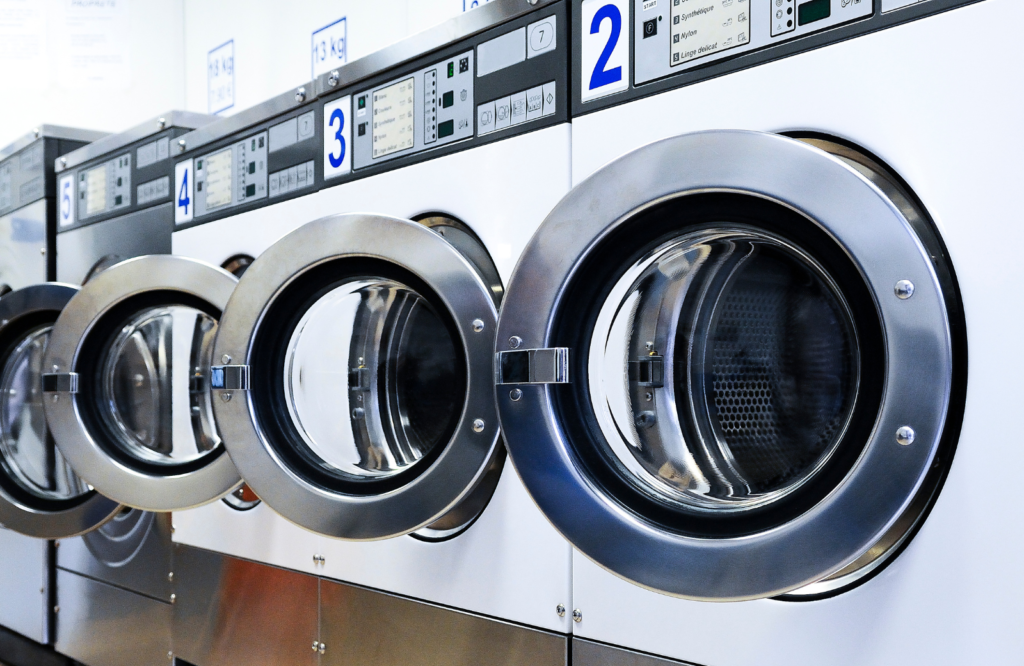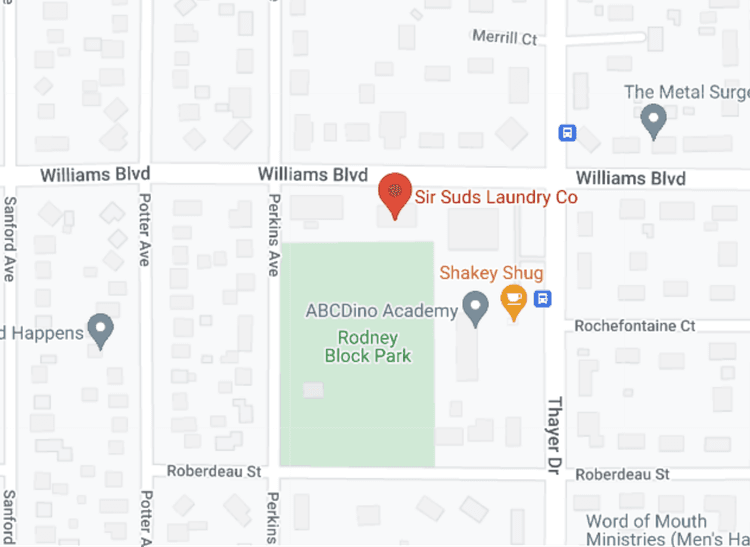
Top-Load vs. Front-Load washers. Which one is right for you?

There are benefits to both styles, but ultimately it will come down to what you are trying to wash and personal preference.
The debate on which style of washing machine is better has gone on for years. Top-load washers became popular in homes in the 1940’s. With the introduction of front-load machines for residential use in the 1980’s, it gave people a tough decision to make when deciding which ones to buy. And for those that frequent a laundromat that offers both, which do you choose?
Below, we’ll discuss the differences in the machines so you can pick the right one for you. And for those who are interested, find out which style Sir Suds has chosen for our new store when we re-open.
Top-Load Washer
Ah yes, the classic top-load washing machine most of us grew up with is still a major player in most households. While they may look the same, there have been advancements in how the machines work. In addition to various cycles and settings, utilizing far less water and the removal of the center agitator on some models may be the most noticeable changes. Some of the pros and cons of a top-load washing machine are:
PROS OF TOP-LOAD WASHING MACHINES:
- Ease of Use: Top-load washing machines are known for their user-friendly design. They are more accessible as you don’t need to bend down to load and unload laundry, which can be especially beneficial for individuals with back or knee issues.
- Quick Access: You can add forgotten items to the wash cycle even after it has started, thanks to the top-loading design. This is not possible with most front-load machines.
- Less Prone to Mold and Odor: Top-load washers are generally less susceptible to mold and mildew buildup because the drum is not completely sealed. This can help maintain a fresher-smelling washing machine over time.
- Affordability: Top-load washing machines are often more budget-friendly than their front-load counterparts, making them an attractive option for cost-conscious consumers.
- Good for smaller loads: Not everybody needs a larger capacity washer, and many front-load machines are roughly two-load size machines and up. Most top-load washers can handle anywhere from 7-12 lbs. of laundry, making them a good choice for individuals with less bulky items or smaller loads.
Cons of Top-Load Washing Machines:
- Water and Energy Consumption: Top-load machines typically use more water and energy per cycle compared to front-load machines. This can result in higher utility bills over time, making them less environmentally friendly.
- Less Efficient Cleaning: Front-load washing machines are generally more effective at cleaning clothes because they use a tumbling action that allows for better clothes agitation and typically only offer one rinse cycle. Top-loaders rely on an agitator or an impeller, which may not be as gentle on delicate fabrics and may not clean as thoroughly, especially if a customer overloads them as there isn’t room for the clothing to move.
- Space Requirements: Top-load washing machines often require more vertical space due to the raised lid. This can be a drawback for individuals with limited laundry room space, especially if you’d like to create a folding table above the machines.
- Noise Level: Some top-load washers can be noisier during operation, especially those with an agitator. Front-load machines tend to be quieter.
- Imbalance Issues: It’s easier to unbalance the load in a top-load washer, which can lead to vibrations, noise, and potential damage to the machine during the spin cycle.
- Limited Features: While there is a wide variety of top-load washing machines available, they may have fewer advanced features compared to some high-end front-load models.
- Hard to keep clean: Top-load machines have lots of nooks and crannies around the lid and controls for dirt, lint, and liquid and powder detergent to get into. While front-load machines have their own cleaning-challenges, top-load machines are not without their cleanliness challenges.
Front-Load Machines
Front-load washing machines have gained popularity in recent years due to their innovative design and efficiency. These machines offer several advantages, but they also come with their own set of drawbacks.
Pros of Front-Load Washing Machines:
- Efficient Cleaning: Front-loaders are known for their superior cleaning performance. They use a horizontal drum that tumbles clothes through a small amount of water, resulting in better stain removal and a gentler wash for your garments.
- Water and Energy Efficiency: Front-load machines are more energy-efficient and use less water compared to top-loaders. This translates to lower utility bills and a reduced environmental footprint over time.
- Large Capacity: Many front-load washing machines come with larger drum capacities, allowing you to wash bigger loads of laundry. This can be especially beneficial for families with a high volume of laundry.
- Space-Saving Design: Front-loaders are stackable, which means you can place a dryer on top of the washing machine, or build a folding table above them, saving valuable floor space in compact laundry rooms.
- Quieter Operation: Front-load washing machines are generally quieter during operation compared to some top-load models, particularly those with agitators.
- Advanced Features: Many front-load washers offer a wide range of features and wash cycle options, including steam cleaning, allergen removal, and customizable settings.
Cons of Front-Load Washing Machines:
- Initial Cost: Front-load washing machines tend to have a higher upfront purchase price compared to top-loaders, which can be a deterrent for budget-conscious consumers.
- Maintenance: Front-loaders can be more prone to mold and mildew buildup due to the airtight seal on the door gasket. Regular maintenance, such as cleaning the door gasket and drum, is necessary to prevent odors and maintain machine performance. You can also purchase gadgets that will hold the door open to promote airflow circulation, helping to keep the gaskets from become mildewed.
- Bending to Load/Unload: Unlike top-load machines, front-loaders require bending down to load and unload laundry, which may not be convenient for everyone, especially those with mobility issues.
- Longer Wash Cycles: Front-load machines tend to have longer wash cycles, which may not be ideal for those seeking quick laundry solutions.
- Inability to Add Forgotten Items: Once a front-load washing machine starts its cycle, it’s generally not possible to add forgotten items without stopping the entire cycle.
- Vibration and Noise: While front-loaders are typically quieter during normal operation, they can produce more vibrations and noise during the high-speed spin cycle if the load is not balanced properly. Some models offer advanced load-balancing features.
CONCLUSION
So which one is right for you? Well, the answer as you can see depends on a lot of factors. But Sir Suds Laundry Co. has chosen to go exclusively with Electrolux Commercial Front-Load machines for many reasons.
The Claris Vibe machines offer superior cleaning abilities, a sanitize mode, and 450g forces of extraction during the spin-cycle. This allows customers to wash and dry in a record-breaking 45 minutes, meaning you get on your way faster, with cleaner clothes. There are many other benefits we can list, such as a front soapbox, touch-screen controls, and the ease of keeping the machines sparkling clean for you, our customers. But to read more about the upgrades we have planned, or watch videos on the new machines, head on over to our website’s renovation page Upcoming Changes & News | Sir Suds Laundry Co. – Stay Updated.



